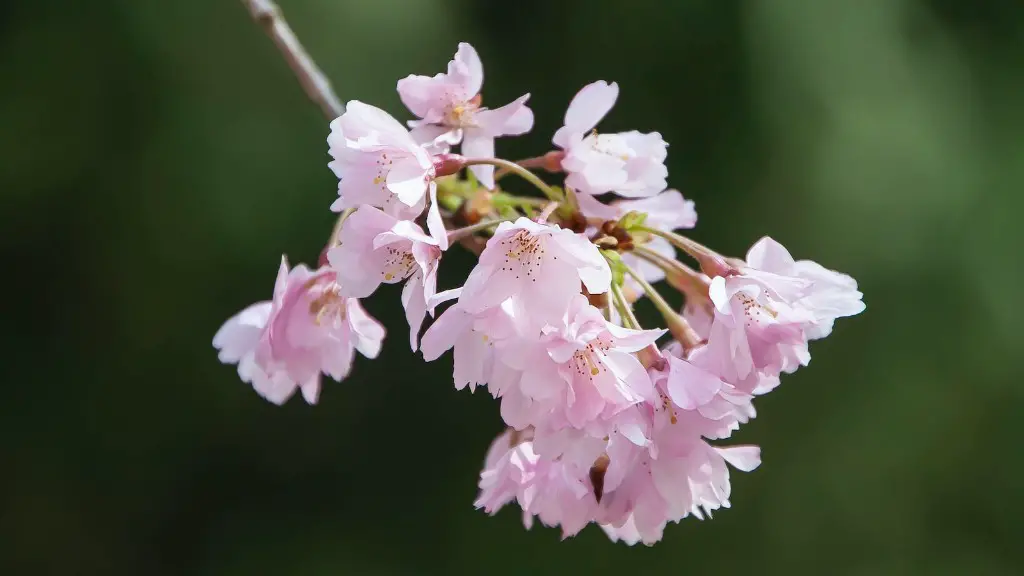Apple Trees are known to be one of the few deciduous trees, whose flowers would prompt us with to the start of each spring. Every spring, delighting us with beautiful pinkish-white flowers and eventually red, ripe apples. However, when we look more closely, we find that not all apple trees are capable of blossoming; often times, some simply do not seem to produce any flowers at all.
This begs the question, why are there no blooms on a few particular apple trees? To answer this, we must first understand the basics of fruit formation. Fruit and Blossom Bears a Mutually Dependence. In simple words, and in the case of an apple tree, if the blossom-bearing segments of the tree, the fruiting spurs, are growing, then they will generate flowers. Conversely, if there are no flower-bearing spurs growing on the tree, or if the tree is too young, then no flowers will develop.
Additionally, apart from lack of fruiting spurs, there can be a few other reasons why an apple tree might not develop flowers. Infection with Parasites or Disease. Several parasites and diseases can prevent an apple tree from blooming. This can be due to weak rootstock, infection with bacterial infections, or damage to the tree caused by frost. Other than that, inappropriate Pruning Schedules, especially in young trees, can also reduce bloom density.
Furthermore, if an apple tree does not develop flowers during a certain season, it might indicate a Nutrient Deficiency in it. The deficiency causes bud failure and poor flowering, and thus, a lack of blooms. However, this is only likely if the tree has been planted in a highly alkaline soil.
Finally, Climate Can Have an Impact Too. Apple trees need to fulfill a certain chilling requirement (cold temperatures during winter months) to bloom flowers. A prolonged cold winter or too much heat during seasonal changes can result in a tree taking longer than usual to develop flowers.
Symptoms Of Blossom-less Trees
Often times, the general symptoms of blossom-less apple trees can be similar to the causes. Weak, short or sparse branches with few or no flower buds indicate a lack of nutrients. Trees affected with diseases often have sharp changes in their branch’s color or leaves with a yellowish tint. Branches with unnatural curves or frozen tips are also a sign that the tree has been affected by frost.
Management
The management of blossom-less apple trees depends on the cause of its reduction in blossom production. Parasites and diseases need to be controlled with chemical insecticides and fungicides, whereas nutrient deficiency can be resolved with a balanced diet of nitrogen, iron, phosphorus, and potassium.
Also, pruning needs to be done carefully as to not to disrupt the balance of fruiting spurs and new shoots on a tree. Once the rootstock is fully healthy, it is then the tree should be exposed to appropriate amounts of cold in order to fulfil its chilling requirements.
Prevention
Some precautions can be taken to ensure that there will be no blossom-less trees in your backyard. Proper Planting Techniques, as recommended by the local horticulturist, is paramount. The soil in which apple trees are planted should be well aerated to allow penetration of adequate nutrients. Trees should also be planted with appropriate spacing to reduce competition of resources and overcrowding.
Also, at the time of planting, Careful Selection of Rootstocks should take place. The rootstocks should be of a variety that produces the most flowers, and have the highest resistance to pests and disease. Finally, once established, the trees should be regularly pruned with strict adherence to the pruning schedule.
Foliar Spraying Results
The act of foliar spraying can have beneficial impacts on blossom production. Foliar spraying essentially is a means of applying nutrients and trace elements directly to apple trees. This is especially helpful when the pollution from industrial sources in the nearby areas are preventing the tree from availing the necessary nutrients from the soil. Foliar spraying is best done during winter and the start of spring to ensure a good harvest.
Irrigation Practices
Apple trees should always be adequately watered. Water availability is highly important for successful blossom and fruit formation. Additionally, water availability during the flowering period and the period soon after, is especially important. However, if an apple tree is watered excessively, then it might end up with few or no blooms due to root rot caused by excess water.
Beating Pest Damage
Apart from the causes associated with blossoms-less trees, the damage caused by pests can also result in a lack of flowers. The most common pests that attack apple trees include leaf rollers, caterpillars, aphids, and mites. All these pests can be targeted with a few natural and chemical measures.
Chemical control is usually done in the form of sprays, whereas natural and mechanical control includes the use of physical barriers and insect trapping spheres. Finally, biological control comprises of the introduction of beneficial predators like ladybugs, lacewings, and predatory mites.


